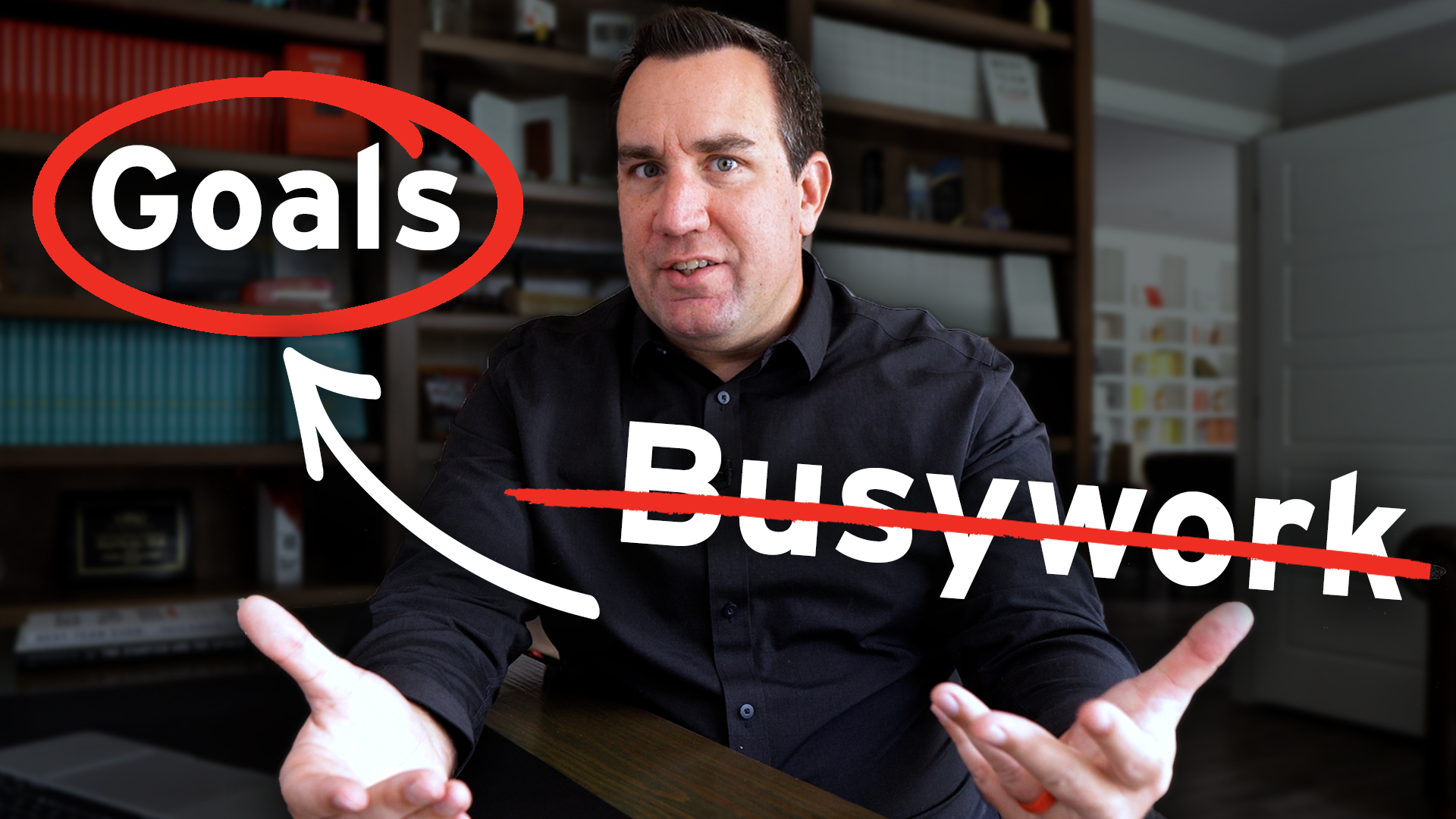
Goal-setting is one of the most powerful tools a leader has. But most leaders don’t wield it nearly as well as they think. And if we’re honest, many treat it as just another item on the management checklist. You draft goals at the beginning of the year, plug them into your HR system, and then forget about them until the next performance review cycle. That’s not leadership. That’s busywork.
And when goals are vague, misaligned, or constantly shifting, they don’t inspire effort—they create confusion. Your team stops trusting the process. Eventually, they stop trusting you. And when that happens, performance drops, motivation tanks, and the team dynamic starts to unravel.
That’s not the kind of team you want to lead. And it’s definitely not the kind of team you want to be on.
The good news is, goal-setting doesn’t have to go wrong. But before we talk about how to fix it, we need to talk about how most leaders get it wrong in the first place.
The Most Common Goal-Setting Mistakes Leaders Make
There are a few ways leaders unintentionally sabotage themselves—and their teams—when setting goals. And one of the most well-documented comes from a study with a surprisingly catchy title: Goals Gone Wild. Researchers at Harvard found that when leaders set too many goals, or overly aggressive ones, it actually hurt performance.
Instead of building focus and momentum, teams start scrambling to hit numbers without understanding the bigger picture. They cut corners. They burn out. And they start working in silos instead of collaborating. I’ve said it before and I’ll keep saying it: metrics aren’t meaning.
And then there’s the issue of stretch goals. They’re great in theory—designed to push the team beyond business-as-usual. But stretch quickly turns into stress when the goals are unrealistic. If your team is standing at the starting line thinking, There’s no way we’ll ever hit that target, the most common reaction isn’t motivation. It’s apathy. Why try if you’re already destined to fail?
Finally, there’s the confusion between learning goals and performance goals. Performance goals are about execution—hitting a number or completing a process. Learning goals are about experimentation—trying new things and embracing occasional failure. Both are valid. But when you try to hit both at the same time, you’re essentially slamming on the gas and the brakes. And teams stall out.
Now that we’ve identified the common traps, let’s talk about how to set goals the right way.
How To Set Goals That Actually Work
Here are four research-backed strategies for goal-setting that will strengthen performance, boost motivation, and build long-term trust with your team.
1. Choose a Clear Focus
Before you start drafting goals, get clear on the kind of work your team is doing right now.
If your team is executing on something known—like running a proven process or scaling an existing strategy—then set performance goals. These should be measurable, time-bound, and tied to operational excellence.
But if your team is exploring something new—developing a prototype, entering a new market, or experimenting with a different process—then it’s time for learning goals. These goals encourage experimentation, reflection, and iteration.
You can shift between learning and performance goals over time. In fact, most innovation cycles require both. But don’t mix them in the same cycle. When everything is both a test and a target, nobody knows what matters most.
Make it clear: are we in learning mode or performance mode?
2. Clarify the Purpose Behind the Goal
Most goals focus on what to do. But few explain why it matters. And that’s a missed opportunity. Because while some people are naturally competitive—motivated by the scoreboard—most people need more than a number to stay engaged. They need meaning.
So instead of saying, “Increase repeat customer business by 15% this quarter,” clarify what that number means. For example: “Increase repeat business by 15% because that shows customers trust us enough to keep coming back—and that we’re delivering value worth repeating.”
It’s not just about the number. It’s about the impact that number represents.
That doesn’t mean you abandon metrics. Specific, measurable goals still matter. But they work best when they’re connected to something deeper. Remember: metrics guide performance. Meaning fuels it.
3. Co-Create Goals and Take Feedback Seriously
Top-down goal-setting kills motivation. If your team has no say in how their goals are defined—or no visibility into how they’re progressing—then those goals won’t inspire action. They’ll be seen as arbitrary mandates. And people disengage.
Great leaders define the “what” but collaborate on the “how.” You can set the targets, milestones, and success metrics. But bring the team in to help design the approach. When people see themselves in the plan, they take ownership. And ownership drives motivation.
That collaboration shouldn’t stop after goals are set. Check in regularly—not to micromanage, but to monitor progress, solve challenges early, and adjust course if needed. Talk about what’s working, what’s not, and what the team is learning. That ongoing feedback loop keeps goals relevant and keeps people engaged.
4. Watch for Signs of Goal Fatigue
Even the best goals can backfire if they come too fast, too often, or without a break. Goal fatigue happens when every project is urgent and every metric is top priority. When your team is always sprinting, it’s only a matter of time before they burn out.
Your job as a leader isn’t just to set goals. It’s to sustain ambition.
That means watching for early signs of fatigue—slipping deadlines, fading creativity, or a drop in team energy. And when you see those signs, don’t push harder. Take a pause.
Ask: “What’s essential right now?” Maybe it’s time to scale back or switch from performance goals to learning goals for a while. Give your team space to recover, reflect, and rebuild their sense of purpose. When motivation returns, performance will follow.
The Real Goal of Goal-Setting
When done right, goal-setting doesn’t just drive results—it builds trust. It clarifies direction, reinforces purpose, and gives people ownership in the outcome. But when done wrong, it becomes just another bureaucratic task. A checkbox. A system no one believes in.
So if your current goal-setting approach isn’t energizing your team, it’s time to change the way you lead it.
Pick a focus. Tie goals to purpose. Build them together. Check in often. And don’t forget to rest.
Because the goal isn’t just to hit a number. The goal is to build a team that’s motivated, focused, and in it for the long haul.

About the author
David Burkus is an organizational psychologist, keynote speaker, and bestselling author of five books on leadership and teamwork.